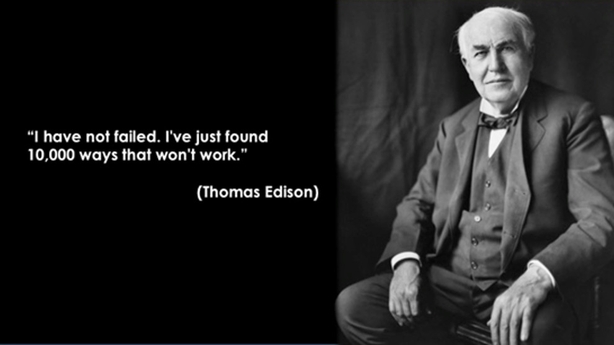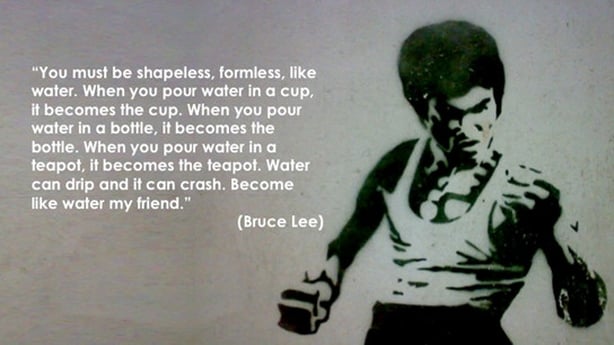The online publishing world is a place where a digital publisher must exercise caution and apply some rules if they are to survive, writes Aidan McCullen.
In Greek mythology the River Styx is the river that forms the boundary between Earth and the Underworld, this represents the Digital Publishing Eco System and it is a place where a digital publisher must be cautious and apply certain rules if they are to succeed.
Subscribe to the RTÉ Innovation Show podcast here
Let us now focus our attention on some possible survival tactics as we navigate the River Styx…
Rule 5- Redefine Failure

(Pic: Wikipedia)
The line "fail and fail quickly" is a bit cliché at this stage and thrown around by digital jargon lovers along with a plethora of other terms and acronyms to ring-fence knowledge and reassure themselves of their own importance. However, what this term means is be prepared to fail, but do it quickly using prototypes and software as a service tools to minimise financial cost and opportunity cost (the fail quickly bit, if you are going to fail at all that is).
When people think of Thomas Edison (of light bulb fame) they think of a guy in a white coat in a lab full of test tubes. Edison, however, was meticulous in his data collection, he had a team of corporate scientists who would make only one change per experiment and measure the impact while recording what that change was.
There are huge lessons to take from Edison. Use A/B tests, which are simply trying option A and then trying option B of a test and seeing which one performs better and then running with that one. One of the easiest ways publishers can do that is by trying A/B headlines on stories on social media and websites. The headlines can be adapted towards demographics and platform. There is a myriad software as a service tools which can help you get started with A/B testing and experimentation Edison style.
Rule 6 - Embrace the Frenemy

(Pic - Wikipedia)
The origin of the handshake was showing the other person you were not bearing a weapon and some even practiced the forearm shake as a way to be absolutely certain. Today, we live in the age of competition. We need to embrace our competition and have a quid pro quo relationship of win-win, we should be aware of what we are giving away and what we are getting in return.
When Facebook changed their algorithm in late 2014, many publishers denounced them for making them pay to reach their audience and some even decided that they would go their own way and become an island.
The problem with that is you do become an island, absolutely you should focus on front door traffic and growing community, but you also need to dance with the devil and use the hyper targeting capabilities that Facebook, Google, Twitter and many others give you.
Take for instance that 77% of BuzzFeed's total audience is now reading BuzzFeed content across 30 platforms to which it publishes content. This is a case of embracing the frenemy to extend your brand. While this doesn't lend itself well to display advertising sales it is ideal for clever branded content distribution, for example if I make a 30 second food video which just so happens to include Hershey's chocolate (who just so happen to be paying me a nice whack for views of the video on all platforms) then using the 30 platforms makes sense.
Another example of embracing the frenemy is to use hyper targeting, so for example if I produce sports content and I have a following of 100,000 on Facebook for my sports channel, I can use Facebook targeting to target NFL fans for my NFL show for example. The benefit is the right content reaching the right customer and equally as important the wrong content not reaching another customer. So when you embrace the frenemy you you need play by the rules of whoever owns the platform.
Rule 7 - Adapt to the Platform

(Pic - Wikimedia)
When you put content on a non-owned platform you must obey by the rules of the platform. For example a 23 minute documentary won't do well on Facebook, a snackable piece will however, but go beyond that and create several snackable pieces and A/B test them.
Check your analytics and adapt every time you ship content, for example video that lasts about 45 seconds works well on YouTube, but your channel will be different from mine so look at your YouTube analytics and see where people are dropping off and amend your next video for that duration. Also note that despite the fact we may hate vertical video, it actually performs up to 9 times better than horizontal video because it is usually viewed on mobile. Also, always ensure video now is understandable without sound, so ensure it has subtitles as many people watch on their commute or while in the office.
Rule 8 - Human Resources

(Pic - Wikimedia)
You will need the right people to make this happen, the tech is easy, it is people with a growth mindset who will learn on the job and embrace new skills that will help grow, save, build your business.
As author Jim Collins says, your need to first hire good people and get them on the bus then decide where to put them sitting on the bus.
Some major hires you need are:
1. An air traffic controller - an essential resource - will decide what content goes on which platform. They will be like an editor for a fragmented world. They will direct the team like a conductor requesting the same piece of content be sliced and diced differently for every different platform. They will take into account context as well as content.
2. A community manager - essentially the ambassador of your company. Tip: good people make good community managers, people who are fun, easy to get on with, creative, energetic and have great emotional intelligence. Putting someone on this as a way to move them sideways in your company or as a way to find a role for them is a recipe social media disaster.
3. Most importantly, we are all becoming data companies, most people are collecting data like it is the new oil. However, collecting data, while a mammoth task and one which needs careful attention is only one part of the equation. Once you have that data it needs to be analysed and translated into metrics that matter and a single truth that everyone buys in to. In this respect you need a data analyst and ideally a data scientist and they sit together.
Next week we will cover some final topics on what we can do to navigate the digital publishing world, before we look at some of the threats that await us.
_____________________________________________________________________
This Saturday, 28 May, we have a fascinating chat with Don Levy, Digital Evangleist from Hollywood and ex-VP of Marketing for Sony Pictures, ee talk to Denis Hayes, MD of the IRDG and focus on Design Thinking as well as Ross O'Dwyer, founder and CEO of Pundit Arena.

